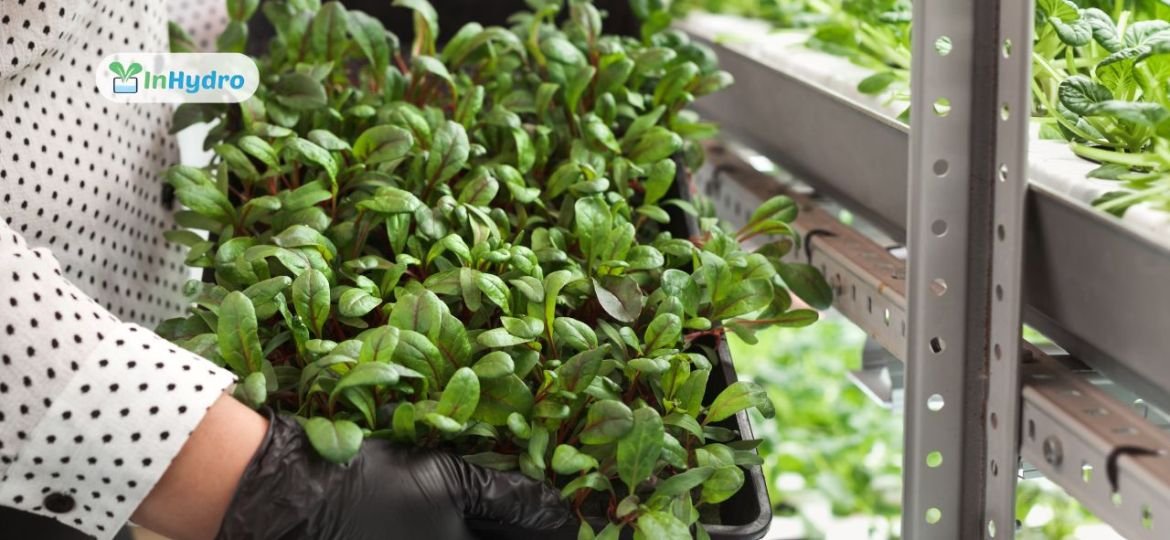
How Hydroponic Farming Supports Local Food Production & Reduces Food Miles
As the world grapples with the challenges of climate change, resource depletion, and growing urbanization, innovative farming techniques are becoming more crucial than ever. Hydroponic farming, a method of growing plants without soil, has emerged as a key solution to support local food production and reduce the environmental impact of food transportation—commonly known as food miles. This article explores how hydroponic farming not only ensures a steady supply of fresh produce but also plays a significant role in creating more sustainable, localized food systems.
What Are Food Miles?
Food miles refer to the distance food travels from where it is produced to where it is consumed. The longer the distance, the higher the carbon footprint of that food due to transportation and energy usage. Foods that are transported across long distances often require refrigeration, packaging, and other processes that contribute to their environmental impact.
With the growing demand for locally grown food, hydroponic farming offers an innovative solution to drastically reduce these food miles, ensuring fresher, more sustainable produce while supporting local economies.
How Hydroponic Farming Supports Local Food Production
Hydroponic farming can be practiced almost anywhere—whether in small urban spaces, warehouses, or greenhouses—allowing farmers to produce fresh, healthy crops right in the heart of cities or local communities. This method eliminates the need for vast farmlands, making it a viable option for urban areas where traditional farming may not be possible.
1. Growing Fresh Produce Close to Consumers
One of the primary advantages of hydroponic farming is the ability to grow fresh, high-quality produce in urban settings. With hydroponic systems, crops like leafy greens, herbs, and vegetables can be cultivated year-round without the reliance on traditional soil-based farming. This proximity to consumers reduces the need for long-distance transportation, meaning produce can be harvested and delivered on the same day, offering consumers fresher options.
2. No Need for Large Farmlands
Hydroponics can be implemented in a variety of settings, such as rooftops, abandoned buildings, and repurposed warehouses, all of which are abundant in urban areas. This flexibility allows for more localized food production that doesn’t require vast expanses of agricultural land, which can be scarce in urban environments. In urban farming systems like InHydro’s vertical towers, space is optimized, and crops can be grown in small areas, feeding local communities without the environmental and logistical challenges posed by traditional farms.
3. Supporting Local Economies
By focusing on local food production, hydroponics creates job opportunities and supports local economies. The establishment of hydroponic farms in urban areas can stimulate economic growth by providing fresh produce directly to local markets, restaurants, and consumers. Additionally, the reduction in transportation and packaging costs makes locally grown produce more affordable, benefiting both farmers and consumers.
Reducing Food Miles with Hydroponics
By bringing food production closer to where people live, hydroponic farming significantly reduces food miles and, consequently, the environmental impact associated with food transportation.
1. Decreased Carbon Footprint
Long-distance food transport is a major contributor to greenhouse gas emissions. From the fuel required to transport goods across countries to the energy used for refrigeration, these processes add up. Hydroponics, by enabling food to be grown locally, eliminates many of these emissions. In fact, with hydroponic farming systems such as InHydro’s vertical hydroponic towers, food can be produced in a highly efficient and environmentally friendly way, contributing to lower energy consumption and reduced CO2 emissions.
2. No Need for Refrigeration or Excessive Packaging
Transportation of produce over long distances often requires refrigeration, which consumes a significant amount of energy. Additionally, long journeys often result in the use of plastic and packaging materials that contribute to waste. By growing food locally through hydroponics, there is no need for extensive packaging or refrigeration, thus reducing waste and energy consumption.
3. Less Food Waste
Food waste is another critical issue in the global food system. A large percentage of food is lost during transportation due to spoilage, delays, or damage. With hydroponic farming, the risk of food loss is minimized because crops are grown and distributed more quickly, maintaining their freshness and reducing waste.
Benefits of Local Hydroponic Farming
Benefit | Traditional Farming | Hydroponic Farming |
Food Miles | High (transported long distances) | Low (produced locally) |
Freshness | Reduced due to long transport times | High (same-day harvest and delivery) |
Energy Consumption | High (transportation and refrigeration) | Low (energy-efficient systems) |
Packaging Waste | High (excessive packaging for transportation) | Low (minimal packaging) |
Environmental Impact | High (carbon footprint from transport) | Low (sustainable and eco-friendly) |
Conclusion:
Hydroponic farming is paving the way for a more sustainable, efficient, and localized food production system. By growing fresh, pesticide-free produce close to consumers, hydroponics not only supports local food economies but also contributes to a significant reduction in food miles, making a positive impact on the environment.
As urban populations continue to rise and the demand for sustainable food grows, hydroponics offers an innovative solution that can help cities become more self-sufficient and reduce their reliance on long-distance food transportation. The future of farming is local, efficient, and sustainable—thanks to hydroponics.

